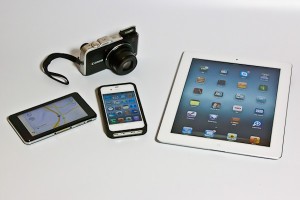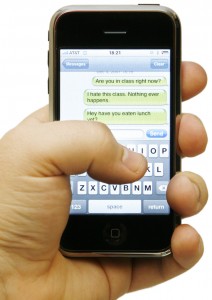
Did you receive some sort of electronic device over the holidays? A smartphone like an iPhone or Android? A video game, camera, iPod, tablet, or laptop or maybe a new PC or Mac? If you didn’t chances are you know someone who did.
A year ago I wrote that for the first time smartphones sales exceeded yearly PC sales. And a few months back, I mentioned that there are African countries that have largely skipped the landline era and gone straight to mobile phones, with there now being more than 715 million in Africa. In the U.S., Comscore reports 114 million Americans used smartphones in July 2012, and that this represents roughly half the potential market. So, add another 100 million or so and the American market’s done. Thinking about the 2012 holiday period, I bet there was a healthy dent in this remaining half. So, what will people do with, and demand of, all these powerful devices?
Where I’m going with this is that I think we’re in for another sea change, and soon. Like many things, communication evolves, sometimes slowly, and sometimes with startling disruption – witness the printing press, typewriter, PC, Internet, email software, mobile text, Facebook, Twitter…
Sure, there are relative periods of stability – long like the ancient days of cave walls and word of mouth; medium like the era of print newspapers and magazines; and short, like mobile texting.
It’s this last one which days are especially numbered, at least as we know texting today. With so many smartphones capable of so much more than a simple text message; with WiFi proliferation and data costs dropping like a rock; carmakers now incorporating WiFi and imminently 4G in vehicles – texting and Twitter don’t stand a chance. Why type something when you can just Voxer someone or blast a picture or a quick hi-def video with Tout? All hail thee visual web!

At the 2013 Consumer Electronics Show happening in Las Vegas as I write this, one theme seems to be even larger smartphone screens to come. Personally, I don’t want to hold a brick to my head (been there done that with cell phones in the 80s). And who knows where a smartphone ends and a tablet begins. Smablet anyone? Another CES theme seems to be the connection of all the new devices to traditional devices like TVs. But ALL of these devices point to the need for more audio and visual content, and less thumbing of the written word.
While the need for compelling information, good storytelling and devices like humor and emotion are among the few communication components that are ‘traditional’ anymore, how the information is conveyed, story told and emotion evoked is ever changing. Increasingly, the cut-through will be achieved through multimedia – sound, video, graphics, animation and, I predict, soon enough smell. Yep, they’ll figure a way to trigger your device to release bacon and perfume scents. Forward thinking firms are already thinking of ways to respond to, if not lead, the rise of the visual web so as to remain connected to their target audiences wherever they are.
(W)right On celebrates its 15th anniversary this month, but we’re just getting started. Owing to our great team and amazing clients we are privileged to serve, (W)right On was recently honored as a 2012 Most Admired Company for its professionalism, integrity and accountability. But like it also leads on the more tangible fronts such as social media evolution and communication program results, you can expect (W)right On to remain on the forefront of the visual web rise. Will you be there too?















